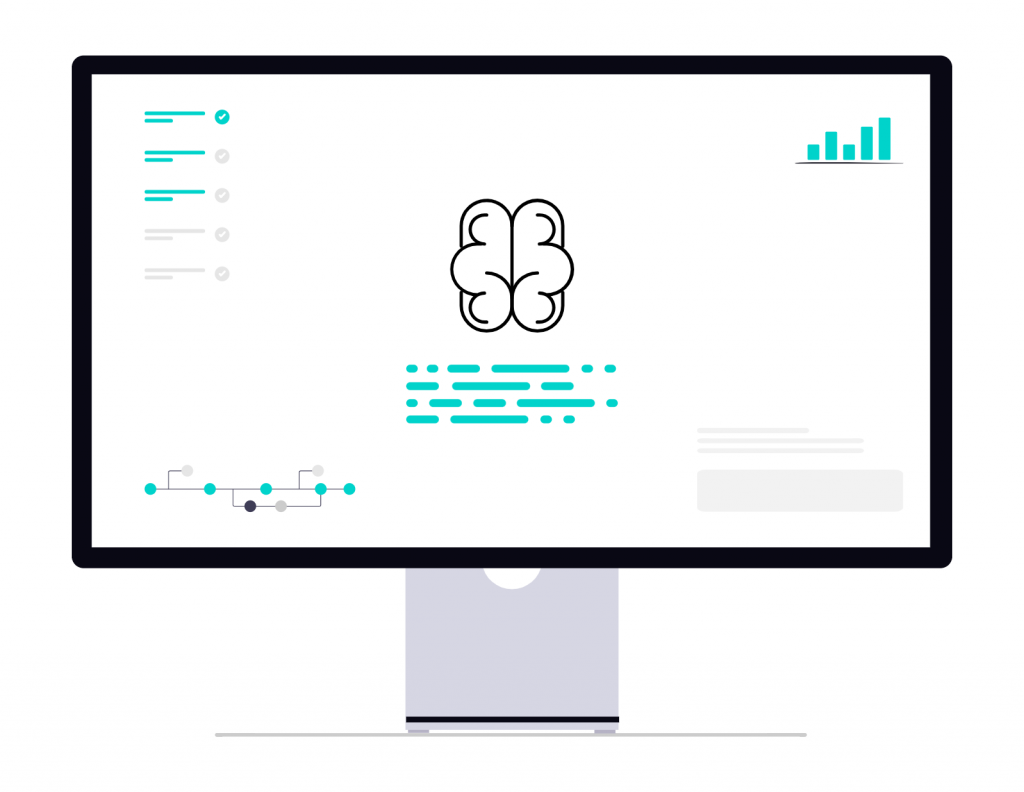
For those working in localization and translation, terms like Natural Language Processing (NLP) and Large Language Models (LLMs) are common. However, sometimes, they’re not that clearly understood, and people may question whether to choose one over the other. In this article, we break down the difference (and also the synergy) between these two, with a focus on what matters for language professionals.
What is Natural Language Processing?
This vast, multidisciplinary field within artificial intelligence focuses on enabling computers to understand, interpret, and generate human language. It relies on linguistics, computer science, and AI to bridge the gap between human communication and machine comprehension. NLP allows machines to process natural language data in a meaningful way, from understanding the grammatical structure of a sentence to discerning the emotional tone of a piece of text.
Let’s take this example: when a translation management system highlights inconsistencies or suggests preferred terminology, it’s using NLP. Rule-based models might identify gender agreement in Romance languages or flag potential grammatical mismatches. Even legacy CAT tools depend on NLP for segmentation and alignment.
According to Root Analysis, the natural language processing (NLP) market is expected to expand from $25.98 billion in 2024 to $302.4 billion by 2035.
What are Large Language Models?
LLMs represent a significant, and in many ways, revolutionary advancement within the broader field of NLP. They are a specific type of deep learning model, predominantly built upon the transformer architecture, that are trained on truly massive amounts of text data. The “large” in LLM refers not only to the colossal datasets they consume but also to the immense number of parameters (often billions or even trillions) that define their internal workings.
The core innovation of LLMs lies in their ability to learn intricate patterns and relationships within language through self-supervised learning. Unlike earlier NLP models that might be trained on explicitly labeled datasets for specific tasks, LLMs are often pre-trained on vast, unlabeled text corpora. This pre-training enables LLMs to develop a remarkable general capability for language, making them highly versatile.
In localization, LLMs are being used for things like:
- First-pass machine translation of content that’s later post-edited.
- Drafting culturally adapted transcreations.
- Generating terminology suggestions based on context.
- Automating QA tasks like flagging fluency issues.
According to Business Research Insights, The LLM market, worth $2.86 billion in 2024, is expected to more than double by 2025 and skyrocket to $1,510.34 billion by 2033.
NLP vs LLM – main differences
LLMs emerged from the field of NLP, but they’ve fundamentally transformed how we understand and generate language. LLMs aren’t replacing NLP. Many traditional NLP techniques remain incredibly useful, especially for tasks that are very specific, have limited resources, or where understanding why a model makes a certain decision is crucial.
| Natural Language Processing | Large Language Models | |
|---|---|---|
| Scope | Broad, includes rule-based, statistical, and learning methods | Narrower, focused on transformer-based deep learning |
| Methodologies | Rule-based systems, statistical methods, traditional ML, deep learning. | Primarily deep learning, specifically transformer architectures. |
| Training data | Can work with smaller, task-specific datasets. | Requires massive, diverse, often unlabeled datasets for pre-training. |
| Computational needs | Generally less resource-intensive. | Extremely resource-intensive for both training and inference. |
| Task specialization | Often specialized for narrow, well-defined tasks. | General-purpose; can perform a wide range of tasks with adaptability. |
| Contextual understanding | Limited context, often sentence or phrase-level. | Deep and broad contextual understanding across long texts due to attention mechanisms. |
| Output | Structured outputs (labels, classifications, extracted entities). | Generative, human-like text, often creative and nuanced. |
| Applications | Parsing, sentiment analysis, MT, IE, QA, etc. | Text generation, summarization, MT, QA, etc. |
Why both matter for localization
So now that we know more about these two, rather than asking “Should we use NLP vs LLM?”, the better question is “How can we best combine them?”
Say you use an LLM to generate a draft translation of product documentation. It’s fast and fairly accurate. But before it reaches a linguist for post-editing, you run it through traditional NLP pipelines that check terminology compliance, grammar rules, and formatting. If you use a hybrid approach, you save time and also retain the quality controls demanded by enterprise translation workflows.
Despite their promise, LLMs aren’t magic. They may lack transparency, they’re still inconsistent with lesser-used tongues, and there’s also a risk of hallucination. This is where NLP earns its keep, because you can use it to impose structure, enforce linguistic rules, or customize behavior in ways that LLMs still struggle to support.
Wrapping up
Knowing the difference between NLP and LLMs helps us make smarter decisions, ask better questions, and ultimately deliver better results for the people who read, watch, and interact with our content. NLP gives us the structure and rules we’ve come to rely on and LLMs bring new levels of creativity and scale that weren’t possible before.